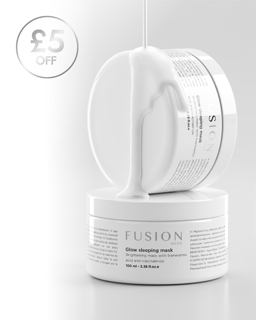Crepey neck
- marielarkin15
- Nov 12, 2022
- 3 min read
Updated: Feb 29, 2024
Here’s a skin care fact for you: The skin on your neck & chest is some of the most delicate, sensitive & thinnest areas of the entire body. And thinner areas of skin are almost always the first to show signs of ageing. On the neck &chest, this will likely show up as fine lines & crepey skin.
Crepey skin looks like crepe paper: thin & easily wrinkled. It’s caused by collagen loss, dehydration in the epidermis & free radical damage. The appearance often appears worse in the colder months. So if you’re starting to notice it a bit more at the moment, it’s likely because of the dry weather.
If it bothers you, there are solutions that can help ease the appearance.
Find a high-quality body lotion you love & apply liberally
When applying facial creams &serums, we can often forget to spread the formulas past our chin. And sometimes we are trying to save cost and just put them on the face. But your neck & chest need hydration so moisturiser thoroughly, which will improve the appearance.
Pick a high-quality, hydrating formula that can strengthen the skin barrier, feed the skin antioxidants (to help fight free radical damage & support the collagen layer), & is safe for sensitive skin. CoQ10 & watermelon extracts, plant oils like oat & moringa, & hydrating botanicals like aloe and coconut oil are things to look out for. Sometimes the easiest solution is the most effective solution.
Encourage collagen production & protect your existing collagen.
Because collagen loss is a major cause of crepey skin, you should try and optimise your production. Of course, collagen decline is a natural part of ageing, but you can support your natural levels with a few easy skin care tweaks.
The first is to protect what you’ve got: Using topical antioxidants can neutralise free radicals that damage collagen. You can also take it a step further by using topical vitamin C & E, which are vital parts of the collagen synthesis process.
Going internal can also enhance natural collagen levels: Collagen supplements are made of up collagen peptides, which can be absorbed by the body & used to enhance your own collagen production. This, research shows, can improve your skin's overall apperance, dermal density, elasticity & hydration.
Gently exfoliate
Exfoliation offers a quick boost to skin’s appearance by improving the appearance of crepey skin quickly.
However, please remember that the skin on the neck is some of the thinnest & most sensitive. Often people get the instructions to exfoliate & will find the strongest AHA serum they can find & apply it nightly. Unless you want an irritated neck, this isn’t the move. Instead, use gentle chemical exfoliators like lactic acid, mandelic acids & PHAs. These will all buff away excess dead skin cells without stripping the delicate skin barrier of the area. And always hydrate after you exfoliate; hydration is the priority in this area.
Wear sunscreen everyday
Other than the face & hands, the neck & chest is one of the most exposed areas, making it particularly susceptible to sun damage. Yet, people often forget to wear sunscreen south of the chin.
In fact, one viral story showed just how damaging unprotected sun exposure can be for the neck. Recently The Journal of the European Academy of Dermatology & Venereology released a case study about a 92-year-old woman’s sunscreen habits: Notably how she rarely applied sunscreen to her neck & the appearance of the two areas was quite dramatic.
While getting time outdoors in the sun is important for mental health, you should always protect your skin with sunscreen or clothing to reduce the change of UV damage.
Do get professional treatments
There are plenty of treatments you can do in the comfort of your own home that are relatively inexpensive. However, if you’re serious about tending to the area, professional-grade services do exist.
Many therapists will do neck & chest add-ons to regular facials. You can also get microneedling, mesotherapy & skin toning devices done in the area.
So if you are concerned about your crepey neck, ask your therapist what they can do to help
More information



Comments